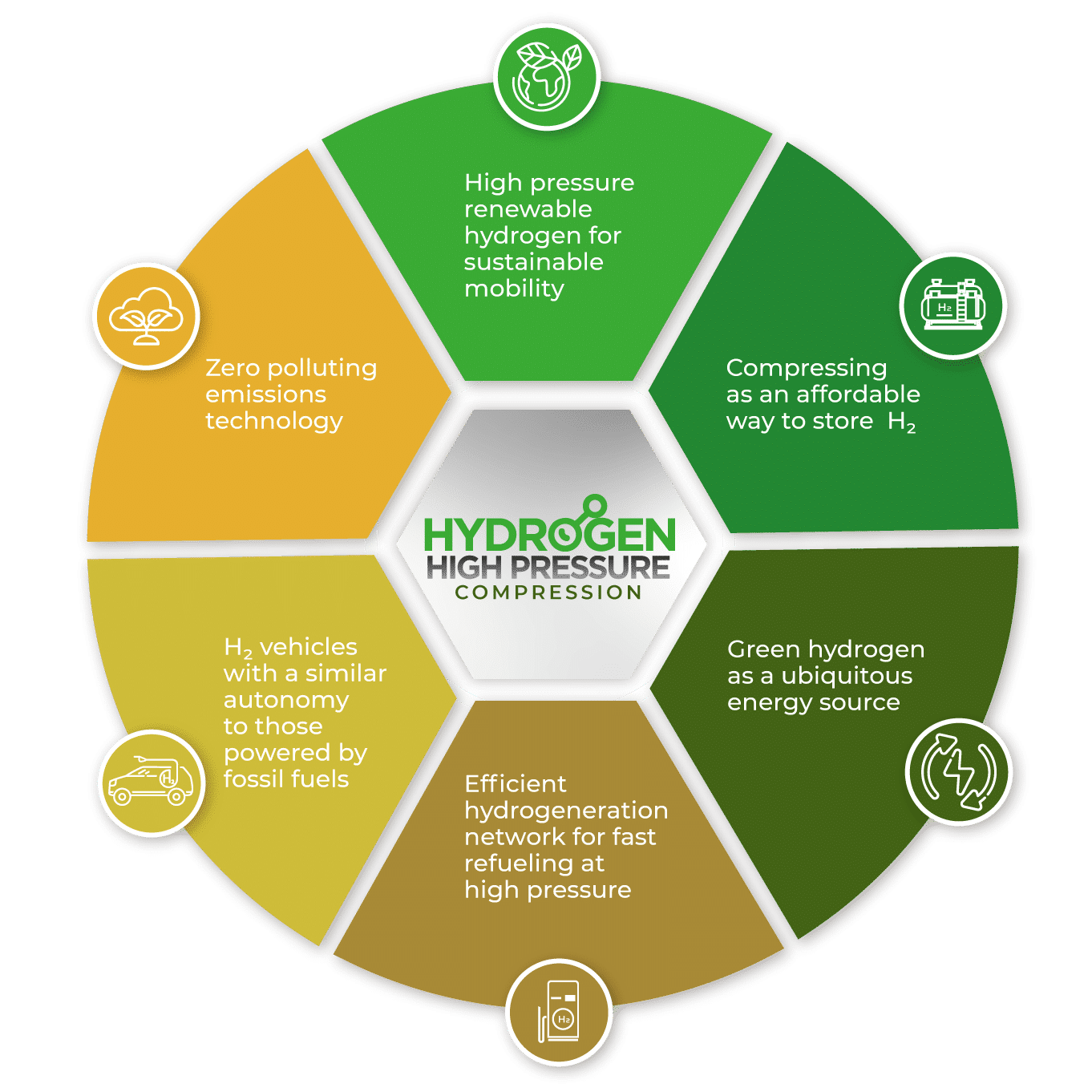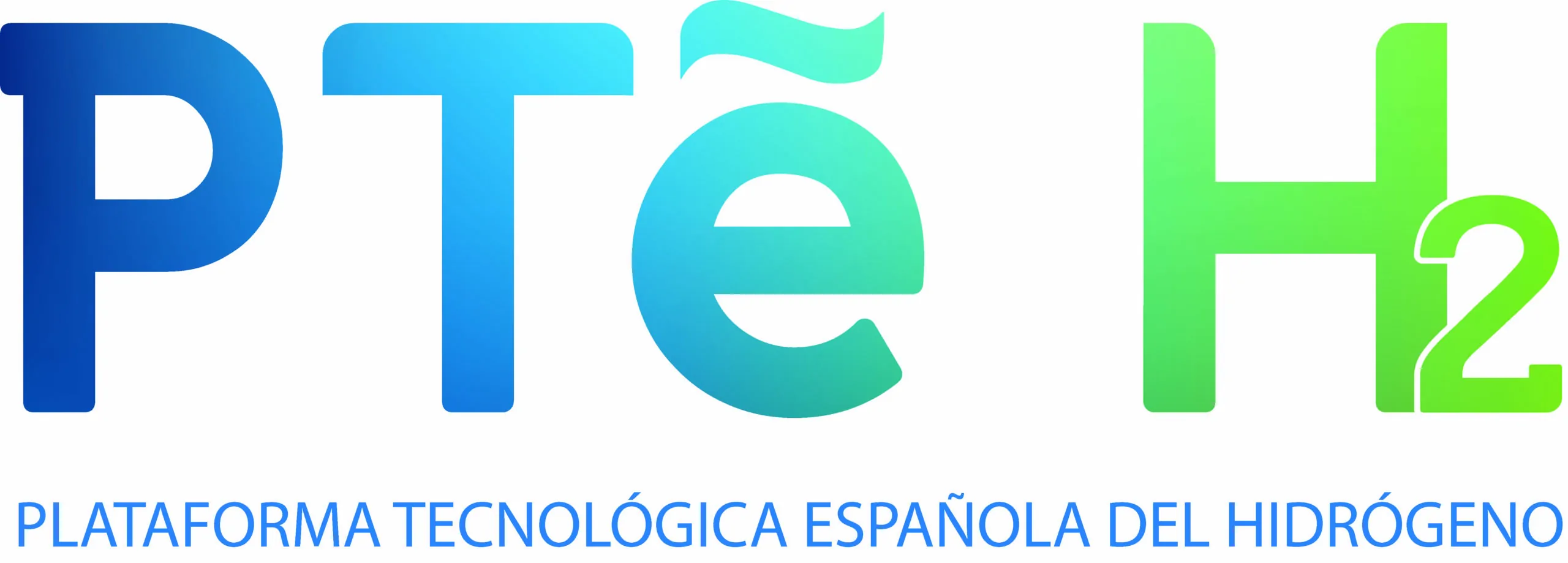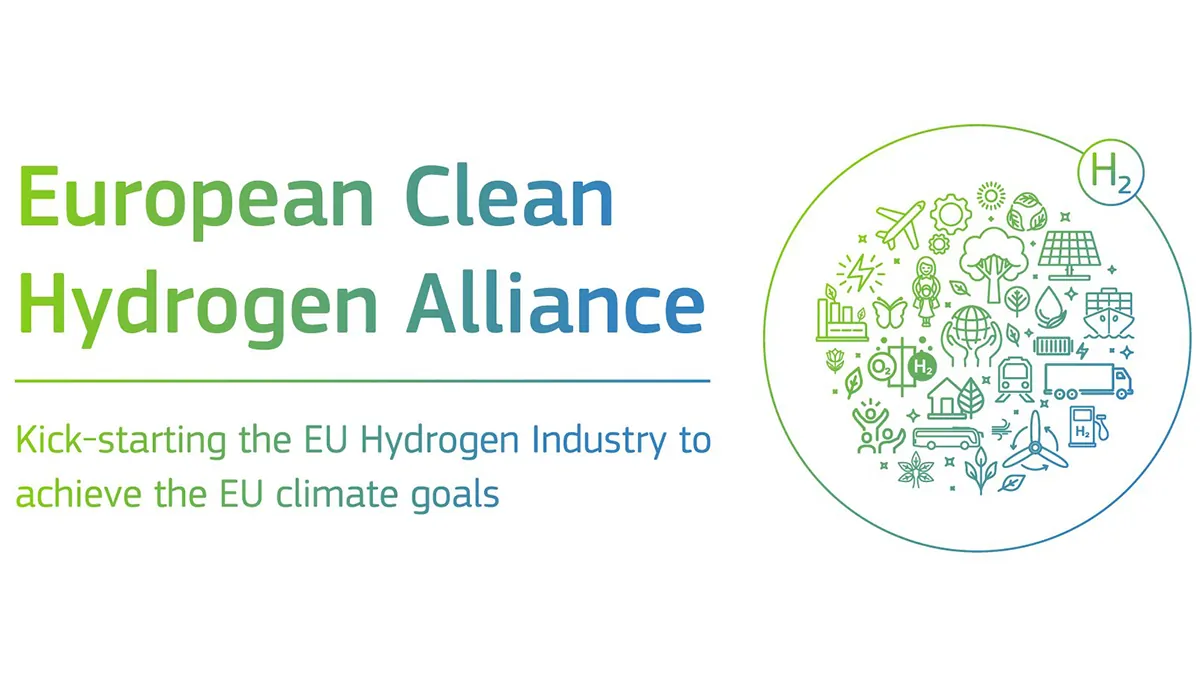Hydrogen (H2) is a gas that, in low-pressure form, has been used extensively as a fuel and raw material in the chemical industry for the past decade. Until now it was mainly sourced from fossil fuels. However, it can also be produced using other natural and renewable sources such as biomass and water electrolysis (through renewable energy). When produced using renewable sources in a way that doesn't pollute the environment or release any CO2, it’s called green or renewable hydrogen.
Hiperbaric is developing high-pressure hydrogen compression technology as an energy vector for the transition towards the use of renewable energies and to help slow down climate change as a consequence.
In the current search for sources of alternative sources of fuel for use in mobility, instead of the traditionally used fossil fuels, hydrogen has positioned itself as an energy vector to help slow down climate change. Its use, however, poses some challenges in terms of storage. Hydrogen has a very low density (13 times less than that of air) and it occupies a great volume when at room temperature, making storing it somewhat complicated. The most economical way of densifying and storing it is by compressing it at a very high pressure (between 350 and 900 bar) before using it.

The compression technology developed by Hiperbaric enables compression at up to 1,000 bar, which makes it suitable for compressing gas for storage or for use in hydrogen stations, where it can be used to fill 50 to 100-liter tanks at different pressures, such as at 350 bar for trucks and buses and 700 bar for new vehicles with latest-generation fuel cells.
With its innovative high-pressure gas compression technology, Hiperbaric aims to be one of the main players in the hydrogen (H2) mobility sector, using renewably sourced hydrogen to help contribute to the decarbonization of transportation.
Advantages of Hydrogen Compression

H2 for a sustainable mobility. Hydrogen is an energy vector; a manufactured product that is capable of storing energy to later be released gradually. In case that renewable energy is used in its manufacture, it is called green or renewable hydrogen.

Compress and store H2. Due to its low density, hydrogen needs to be compressed in order to be stored and the most economical way to densify this gas is to compress it by applying high levels of pressure (between 350 and 900 bar) for storage.

Ubiquitous energy. Hydrogen is the lightest, most basic, and most ubiquitous element in the universe. It is present everywhere, so it can be manufactured practically in any place in the world.

Fast refueling. Hydrogen allows to refuel in just a few minutes, around 5, compared to the time required to recharge an electric car or truck battery, which can take up to two hours.

Wide autonomy. The autonomy of hydrogen vehicles is similar to those powered by conventional fossil fuels. Its tanks allow it to travel up to 800 kilometers without refueling.

Zero polluting emissions. Hydrogen combines with oxygen from the air in the fuel cell, producing electricity, water, and heat as a product. Electricity and heat are employed, being the water vapor the only associated emission the vehicle emits through the exhaust pipe. By using renewable energy to separate hydrogen, the process as a whole is completely emission-free.
Members of some of the most prestigious Associations and Institutions in the world





